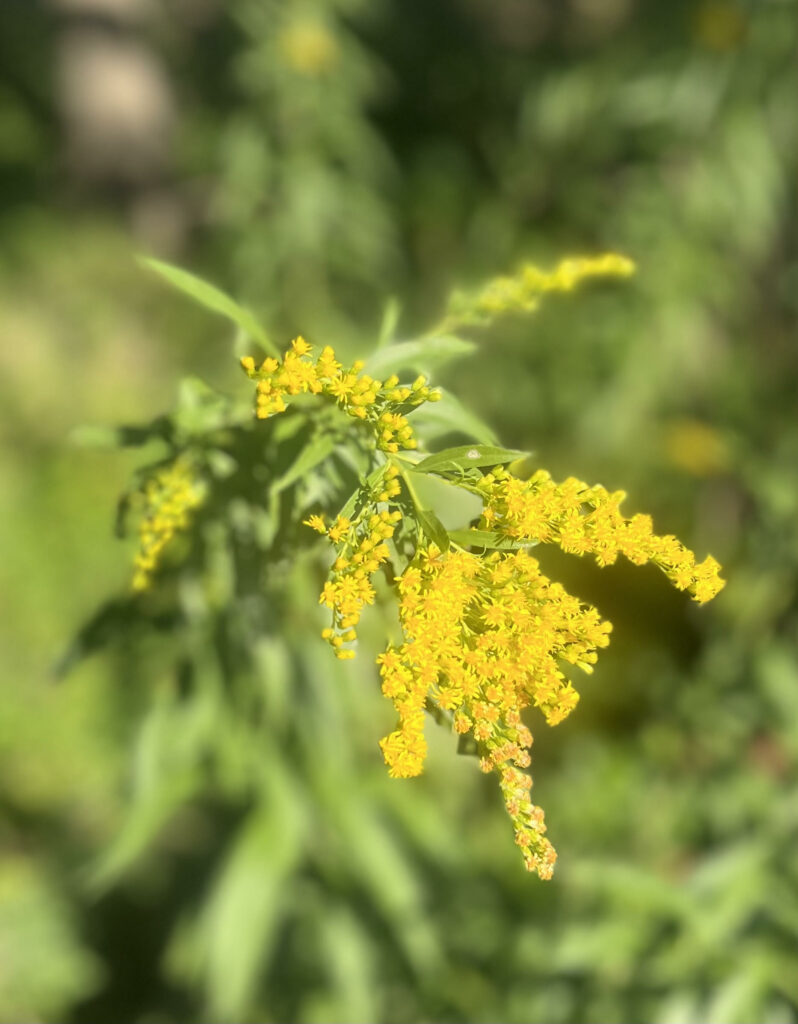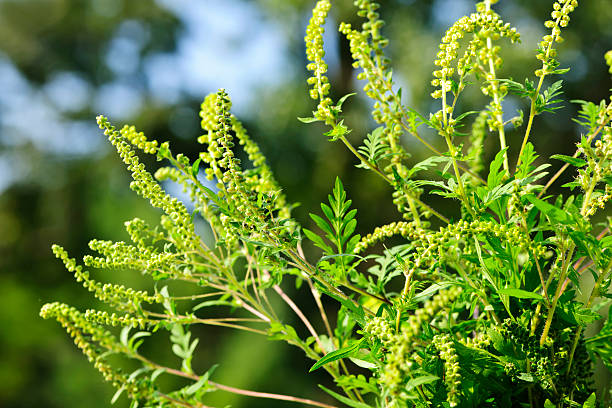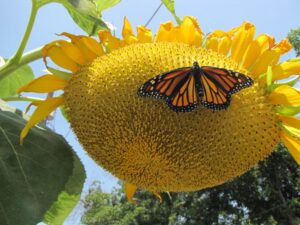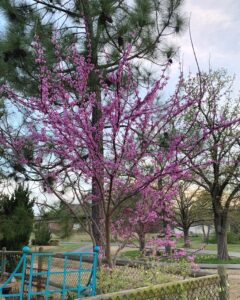Kathy Berryhill
Creek County Master Gardener
During September, bright yellow blooms on tall, weed-like stems can be seen along roadsides and in fields. Many people assume that they are seeing ragweed since fall allergy levels and allergy symptoms are on the rise. Chances are good that if the bright, golden blooms have caught your attention, you are seeing goldenrod, not ragweed. Both plants bloom at the same time and both are in the aster family, but goldenrod blooms are larger and brighter.
Goldenrod grows to about 4’ tall with green stems and long tapered leaves. The bright yellow flowers of the goldenrod produce heavy, sticky pollen grains that attract many pollinators such as bees, butterflies, beetles, and wasps. As a popular perennial, goldenrod is invaluable as a late-season pollen source. Containing an abundance of protein, fats, and minerals, goldenrod pollen contributes to the winter survival of honeybees.


Ragweed flowers are nondescript and don’t attract pollinators. The blooms are small and resemble greenish-yellowish bumps. The plant is unisex, with male flowers being found near the end of the flower spikes, while the female flowers are found near the leaves. Lacking nectar, the pollen grains are much lighter and easily travel through the air to achieve pollination. A single ragweed plant can produce up to 1 billion pollen grains which readily spread with fall breezes. Allergy sufferers bear the brunt of its proliferation.
So how does one cope when there is an abundance of ragweed pollen in the air? Begin by reducing your exposure to the pollen. Many sources are available to monitor the pollen count. If it is unusually high, consider staying indoors. If that is not possible, limit outdoor exposure during peak periods (10 AM-4 PM). Keep windows closed and utilize HEPA filters which can filter out up to 99% of the pollen. Remove shoes when coming indoors to keep from spreading pollen. Launder clothes after working outside and shower and wash your hair to remove pollen particles.
Examine plants closely before removing a plant that you think is causing allergies! If it has showy yellow flowers, let it grow. The pollinators will thank you.










